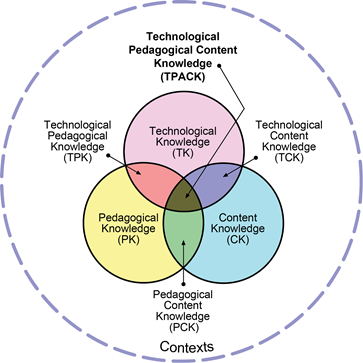One of my graduate courses required a group project as part of a block about the Learning Design Studio. Our project developed a Google Site for our work. This is a copy of my contributions to the group effort, reformatted for this website. The project starts here.
Learners First pattern
Designers should ruthlessly pursue learner needs even at the expense of ‘coolness’.
This is Steve Chmelar, inventor of the foam hand, shown at his high school game with the first one he created, in 1971. This photo was released into the Public Domain by its author, the Associated Press.
Problem
One recurring problem or design challenge is that designers sometimes become enamored with the idea of using a specific solution or technology, so much so that it comes at the expense of learners’ needs.
Forces: This pattern is important when designers face needs that contradict the main goal of designing learning activities or programs. The competing needs may come from personal curiosity and desires on the part of the designer, management or departmental interest in specific technologies, marketing efforts on behalf of technology providers, or a general lack of understanding of the learners’ needs to support their learning.
Context
The two case studies discussed or alluded to this pattern are:
- Villagrasa et al. (2014) article about gamification: This article made specific mention of the pattern when discussing the framework they chose for their project.
- Gregory et al. (2015) article about virtual worlds: This article made allusions to the pattern when discussing issues faced by one university in maintaining and growing a virtual world.
Villagrasa et al.: Material, social, and intentional aspects
This article was an example of what to do when paying attention to the Learners First design pattern.
Villagrasa et al (2014) researched methodologies, principles, and frameworks before beginning their design. They chose the TPACK framework, which emphasizes that when developing a technology-enhanced learning environment, the designers must pay attention to three overlapping domains of knowledge: the pedagogical, the technical, and the content:
TPACK framework, © 2012 by tpack.org
The TPACK framework does away with other approaches to integrating technology in learning environments (such as those mentioned in the ‘Forces’ section here) because those ‘approaches tend to initiate and organize their efforts according to the educational technologies being use and preferred by the teacher or the institution) rather than the students’ learning needs, which is exactly the opposite of our desired approach in which the user is a central element of the experience’ (Villagrasa et al., 2014, p. 41).
Gregory et al.: Material, social, and intentional aspects
This article provided a cautionary tale about what happens when the Learners First design pattern is ignored.
This article discusses four universities who had varying experiences launching and growing virtual worlds for their students. One university’s initiative never seemed to take off. Their project had a series of champions, but they did not remain dedicated to the project even as it faltered: ‘In recent years, the use of in-house maintained builds in major online virtual worlds such as Second Life have declined as focus and champions have moved elsewhere’ (Gregory et al., p. 84). One might extrapolate that the designers chose Second Life because it had generated ‘buzz’, and once the buzz died down the champions moved on to the next hot technology.
The lack of a champion wasn’t their only challenge: They also were attempting to create a virtual world for learners who didn’t have Internet access, a university that lacked funds or modern computer equipment, and staff that was not trained (and would remain untrained) in the technology. The author does not discuss learner needs at all (and in fact, indicates that they are still pursuing this effort, by moving toward a blend of non-online software that can be combined and used in a complicated configuration). However, to the outside reader, it seemed obvious that they would not have success in part because they were entranced by the technology over what the learner needed.
Solution
Pedagogical aspects: If a pattern is a recurring problem or design challenge plus a solution to that challenge, which helps us use case studies to build our design; and if the case studies point to the need for placing the learners’ needs first; then the pedagogical aspects—that is, the teaching aspects—is pretty clear within the very name of the pattern. The trick, as mentioned within the TPACK framework above, is to remember to apply pedagogical knowledge.
Technical aspects: The solution is available in almost any instructional systems design (ISD) model, but is not dependent on any one model or any technology. In this project, the solution is in investigating personas and reviewing case studies and theoretical frameworks; in the ADDIE ISD model, it is the Analysis phase; in SAM , it is the Preparation phase; in Rapid Prototyping , it is given short shrift but it is part of the Assess Needs and Analyze Content phase; and so on.
Examples
The positive effects of placing learner needs first can be seen in the article by Villagrasa et al., as well as many others.
Next: Design


